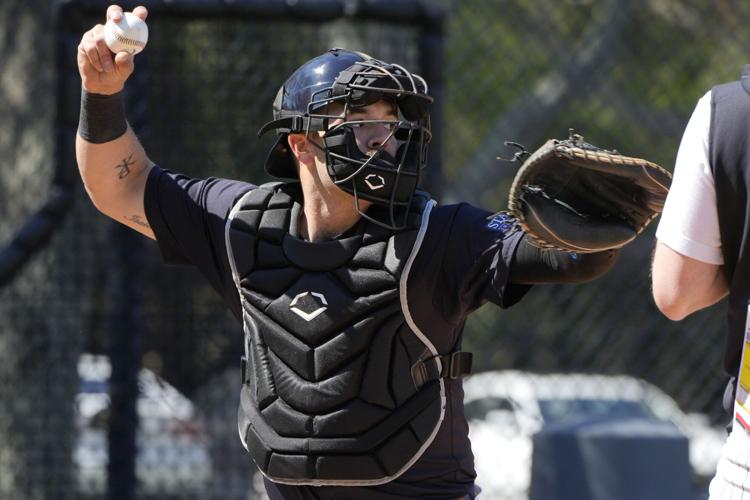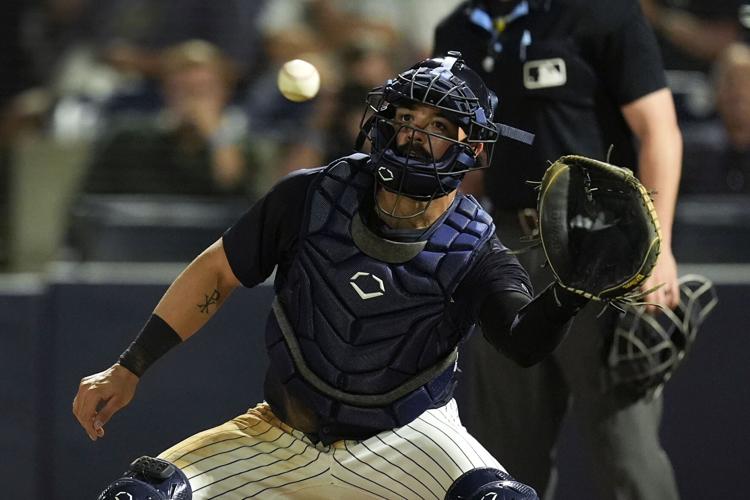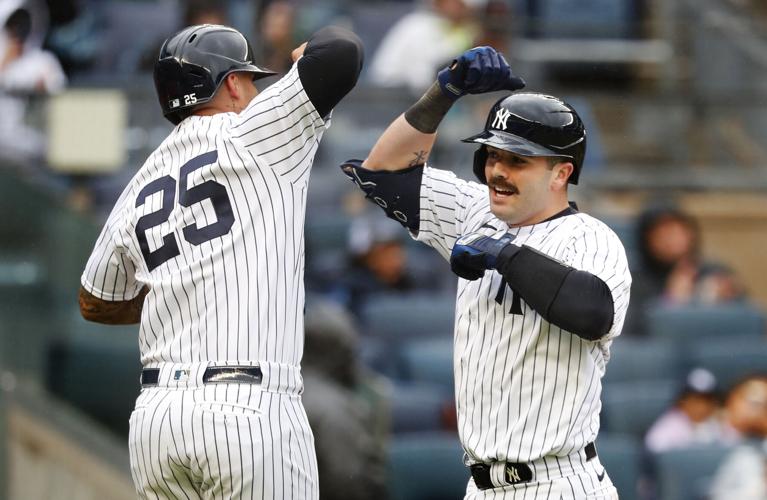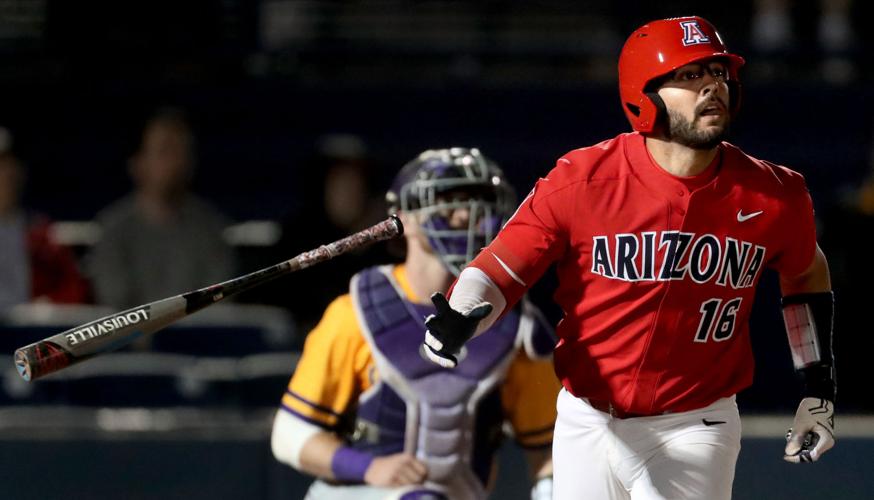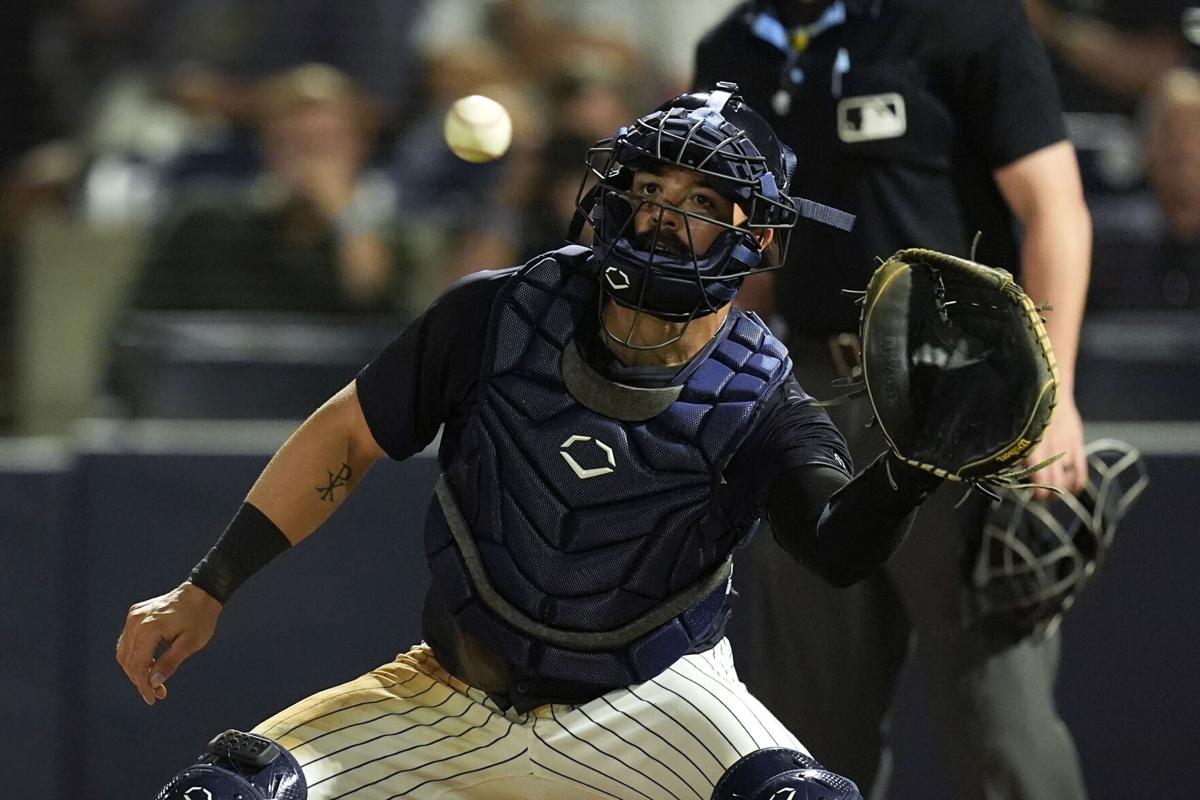PHOENIX — First pitch is more than three hours away, but Austin Wells is pressed for time.
The former Arizona Wildcat standout is in the lineup for Monday night’s game. He has a meeting with the starting pitcher. He has drills to run, batting practice to take.

Michael Lev is a senior writer/columnist for the Arizona Daily Star, Tucson.com and The Wildcaster.
Such is life when you’re the co-starter at catcher for the New York Yankees.
Back in the state where he raised his draft stock to first-round status, Wells would go 0 for 3 with an RBI at the plate in the Yankees’ 5-2 victory over the Diamondbacks in front of a bipartisan crowd at Chase Field.
But it was Wells’ performance behind the plate that would draw the most scrutiny the next day.
Did Wells receive the ball as well as he could? Did he frame pitches with precise technique? Did he convert enough borderline pitches into called strikes?
Ever since he became a pro prospect, first at Las Vegas’ Bishop Gorman High School and then at the UA, Wells’ defense has been dissected and often denigrated. No one doubted that his bat could play in the big leagues; after posting a 1.035 OPS in 71 games at the UA, Wells swatted four home runs in his final eight appearances as an MLB rookie last year.
Many questioned whether Wells could play catcher long term.
None of those skeptics works for the Yankees, who thought so much of Wells that they drafted him twice — in the 35th round in 2018 and in the first round in ’20. Also, as Yankees major league field coordinator and director of catching Tanner Swanson noted, if the organization didn’t think Wells could be a catcher, it would have moved him to another position by now.
That hasn’t happened. And if Wells continues on his current trajectory, it won’t be happening anytime soon.
“There’s nothing behind the plate that he can’t do,” Swanson said from the visitors’ dugout as the players trickled onto the field for pregame warmups.
“This might be a bold take, but I already think he’s top 10, top 15. He’s got to go out and prove it. He’s got to play. But from a skill standpoint … everything in his performance since we’ve acquired him, objectively, has told us that hey, this guy can catch.”
Entering Tuesday night, Wells had appeared in 22 MLB games since his debut on Sept. 1, 2023. He played catcher in every single one.

New York Yankees catcher Austin Wells throws to second base during a spring-training workout on Feb. 21 in Tampa, Fla.
Via Statcast technology, the defensive performance of a catcher can be measured in ways that drill down far deeper than errors or caught-stealing percentage. The most valuable stat/skill is framing, which is defined as “the art of a catcher receiving a pitch in a way that makes it more likely for an umpire to call it a strike.”
Last year, per Baseball Savant, Wells ranked 31st among MLB catchers with a strike rate of 47.5% on pitches received in the areas bordering the strike zone (minimum 500 pitches). His catching cohort, Jose Trevino, ranked seventh at 49.9%.
Although he was with the big-league club for only a month, Wells impressed Yankees manager Aaron Boone.
“He surprised us … with where he was defensively,” said Boone, who also praised the defensive work of new left fielder Alex Verdugo, the Sahuaro High School product who played previously for the Los Angeles Dodgers and Boston Red Sox.
“(Wells) was further along than I expected him to be. I would say he’s even further along than that now. We have a ton of confidence in him behind the plate now. I think he’s turned himself into a really good defensive catcher, not just a guy that can play the position.”

The New York Yankees' Austin Wells, right, celebrates with Gleyber Torres after hitting a home run against the Diamondbacks during the fourth inning of their game on Sept. 25, 2023, in New York.
Wells himself was far from satisfied. After taking October off from hitting and catching, Wells reported to the Yankees’ training facility in Tampa, Florida, in November to begin his offseason ramp-up. Is that normal?
“I wouldn’t say it’s normal,” Swanson said. “Getting a taste of the major leagues last year, I think a couple things happen: One, it gave him a lot of confidence that, ‘Hey, I can play at this level.’ Two, it also motivated him to really attack this offseason.”
Wells has always been a worker. From the moment he arrived at Arizona in the summer of 2019, he took a serious approach to his craft. To hear that he’s doing the same now comes as no surprise.
“I wanted to be as prepared as possible going into spring training,” Wells told me Monday. “Being down there at the complex gave me that opportunity. It just made sense.”

New York Yankees catcher Austin Wells catches a ball at home plate during the second inning of a spring-training game against the Detroit Tigers on March 7.
With first pitch about two hours away, Wells continues to put in work. While others field grounders and fly balls, Wells squats atop a mat that covers the batter’s box. He contorts his body into different positions — Swanson is an advocate of the one-knee-down setup, which helps catchers get closer to the ground — as baseballs are fired from a pitching machine. After Wells takes his reps, Trevino takes his turn.
The catchers receive one offering after another, smoothly and discretely sweeping their gloves up and out, up and out.
“We’re really in the weeds in terms of the quality of every reception,” Swanson said. “You prepare as if every pitch is an opportunity for you to impact the count.”
It is the essence of the sport, a never-ending battle, a “war,” Swanson said, that the Yankees are “trying to win on a nightly basis.”
The difference between, say, a 2-1 count and a 1-2 count is massive. Last season, the lowest team batting average with a 2-1 count was .281 (Oakland). The highest with a 1-2 count was .191 (Texas).

Arizona's Austin Wells tosses his bat as he watches his blast chase home three Wildcat runs against Albany in the second inning of their season opener at Hi Corbett on Feb. 14, 2020.
That’s why the Yankees, under Swanson, have such an incredibly detailed catching program. The day-after-game breakdowns between catchers and coaches are akin to football film sessions between quarterbacks and offensive coordinators. Every pitch is evaluated. Every performance is graded.
Swanson said Wells has “gotten exponentially better each year, which I think speaks to his willingness and desire to find ways to improve defensively.” The goal now? Excel in those areas every day. That’s the biggest difference between Wells and Trevino, who’s been in the majors since 2018 and won multiple defensive awards in ’22.
“The biggest focus over the offseason was just, how can I be more consistent?” said Wells, who had about 60 supporters in the stands Monday. “What positions can I be in to receive the ball 1% better or block 1% better?”
The difference between a strike and a ball can be a matter of millimeters, Wells said. The best catchers try to create something that isn’t visible to the untrained eye.
It’s difficult, demanding, even tedious. Wells embraces it all.
“The challenge of the position,” he said, “drives me to want to catch every day.”
So does the perception that lingers within the baseball industry — that as a player, Wells, much like his pandemic-shortened UA career, is incomplete. He takes it personally, as he should.
“It definitely has motivated me,” he said. “And continues to motivate me.”


